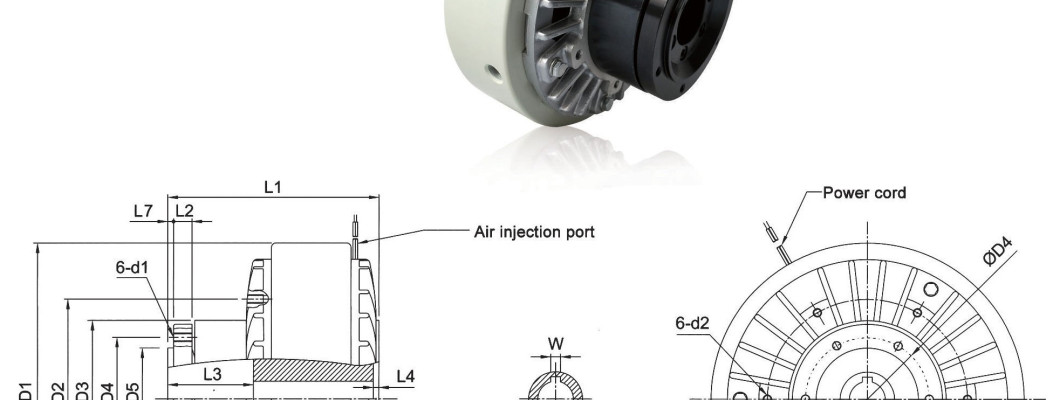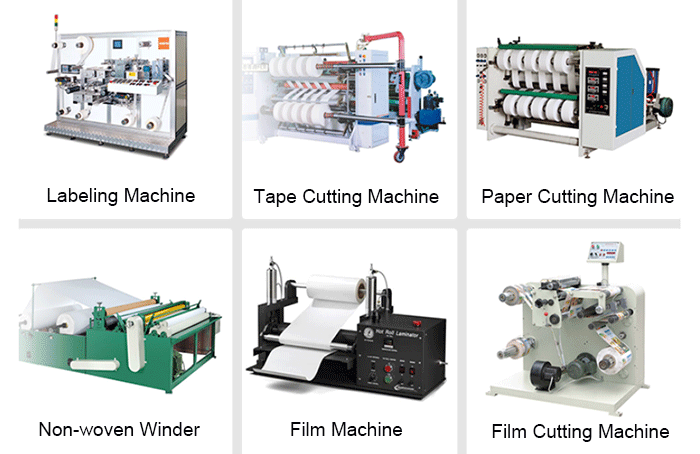
What is a magnetic clutch?
Magnetic particle clutch is an automatic control element with superior performance and it is a special kind of electromagnetic clutch which does not need friction plates. Instead, it adopts magnetic powder as the working medium and transmits torque by means of the bonding force between the magnetic powders and the frictional force between the magnetic powder and the working surface.
How does a magnetic particle clutch work?
Here is the working principle of magnetic powder clutch.
1. Coil stationary magnetic powder clutch and magnetic powder brake are automatic devices that control the input current and change the output torque.
2. When the coil is not energized, the input shaft rotates, the magnetic powder is pressed against the inner wall of the clamp ring under the function of centrifugal force and the output shaft is not in contact with the input shaft, at this time it is idling state.
3. When the coil is energized, the magnetic powder produces a flux linkage under the function of the magnetic force line, so that both output shaft and input shaft become a rigid body and rotate, and a slip occurs when overloaded and it is in a working state at this time so as to achieve the purpose of transmitting torque.
Where are magnetic particle clutch used?
The magnetic powder clutch is composed of a transmission unit (input shaft) and a driven unit (output shaft), etc. The standard voltage is DC 24V and the high performance magnetic particle clutch has the following functions.
1. For continuous sliding and tension control.
2. Buffer start and stop.
3. High-speed response.
4. For torque limit.
5. Power absorption.
6. Positioning stop.
7. For simulating load.
8. It can be used for clutch and torque braking in the process of torque transmission.
9. It can be used as overload device.
10. It can realize stepless speed regulation.
Magnetic powder clutches are widely used for unwinding and winding tension control in papermaking, printing, plastics, rubber, textile, printing and dyeing, wire and cable, metallurgy and other related coiling and processing industries.

What are Electromagnetic Particle Clutch Advantages?
1. Magnetic powder clutch uses high temperature resistant coils and bearings with special grease, the operation is stable, and there is no vibration, no impact and no noise under the state of starting, running and braking.
2. Super alloy magnetic powder with superior heat resistance is used, which has low temperature rise, constant output torque, fast response speed and can work at high frequency.
3. The uniform cooling structure and excellent heat dissipation design are adopted and its service life is longer.
4. The clutch comes with overload protection function, namely, in the case of torque overload, the automatic slip differential action plays the role of overload protection.
5. The magnetic particle clutch ensures that the maximum torque from the engine can be transmitted and there is still a certain amount of torque to be transmitted.
6. When it is separated, it can be completely separated and when it is joined, it has gentle action and good heat dissipation capacity.
7. The inertia moment of the driven part should be as small as possible. In this way, the rotational speed of the part connected to the input shaft of the transmission is relatively easy to change when the clutch is shifted, thereby reducing the impact between the gears.
8. It has the ability to ease the impact in the rotation direction, attenuate the vibration in this direction and has low noise.
9. The pressure of the platen and the coefficient of friction of the friction plate vary little and it has stable working.
10. It features labor-saving operation and convenient maintenance.
Peaco Support provides both double shalft magnetic particle clutch and hollow shaft magnetic particle clutch, whoes rated torque is up to 3Nm, 6Nm, 12Nm, 25Nm, 50Nm, 100Nm, 200Nm, 400Nm, widely used in labeling machine, tape cutting machine, paper cutting machine, non-woven winder, film machine, film cutting machine, etc.

Leave a Comment